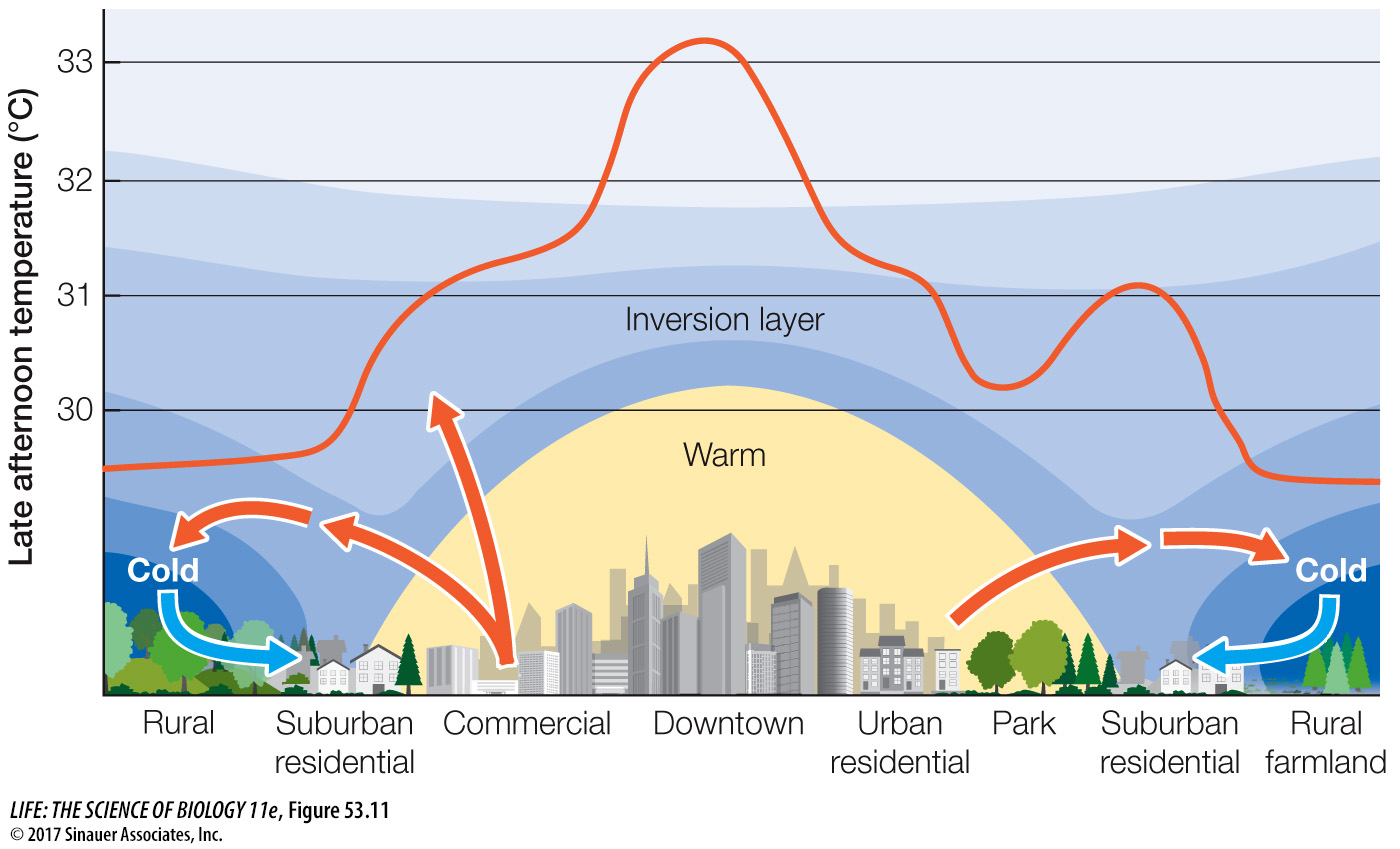It is estimated that humans have transformed more than 50 percent of Earth’s land surface, replacing it with infrastructure and agriculture needed to support our burgeoning population. You have already seen how the conversion of forestland to pastureland can change regional climate, and in Chapter 57 you will learn more about how humans have changed global climate through the burning of fossil fuels. Structures such as dams, bridges, and nuclear power plants can dramatically transform rivers and lakes. Urban areas, in particular, modify not only the immediate physical environment but also the surrounding climate. A survey of 60 U.S. cities in 2014 showed that urban summer temperatures were on average 1.5°C hotter than rural summer temperatures, with the top 10 cities having an average urban–rural temperature differential of 5°C. The cause of this so-called urban heat island effect is simple: concrete, asphalt, and even the dark roofs of buildings absorb heat from solar radiation and radiate that heat in the evening hours (Figure 53.11). Cities also produce more heat through the burning of fossil fuels from cars, factories, and buildings. Parks can serve to cool the surrounding air through the evapotranspiration of trees and other vegetation. In addition, the temperature differential between cities and the surrounding countryside can create “country breezes,” air movement generated as rising warm air from the city is replaced by cold surface air from surrounding rural areas.

Figure 53.11 Cities Can Create Heat Islands and Country Breezes As this hypothetical urban heat island profile shows, cities and suburbs typically have higher temperatures than rural, park, or agricultural areas. Country breezes form when warm air from cities and suburbs is replaced by cool air from rural areas.
